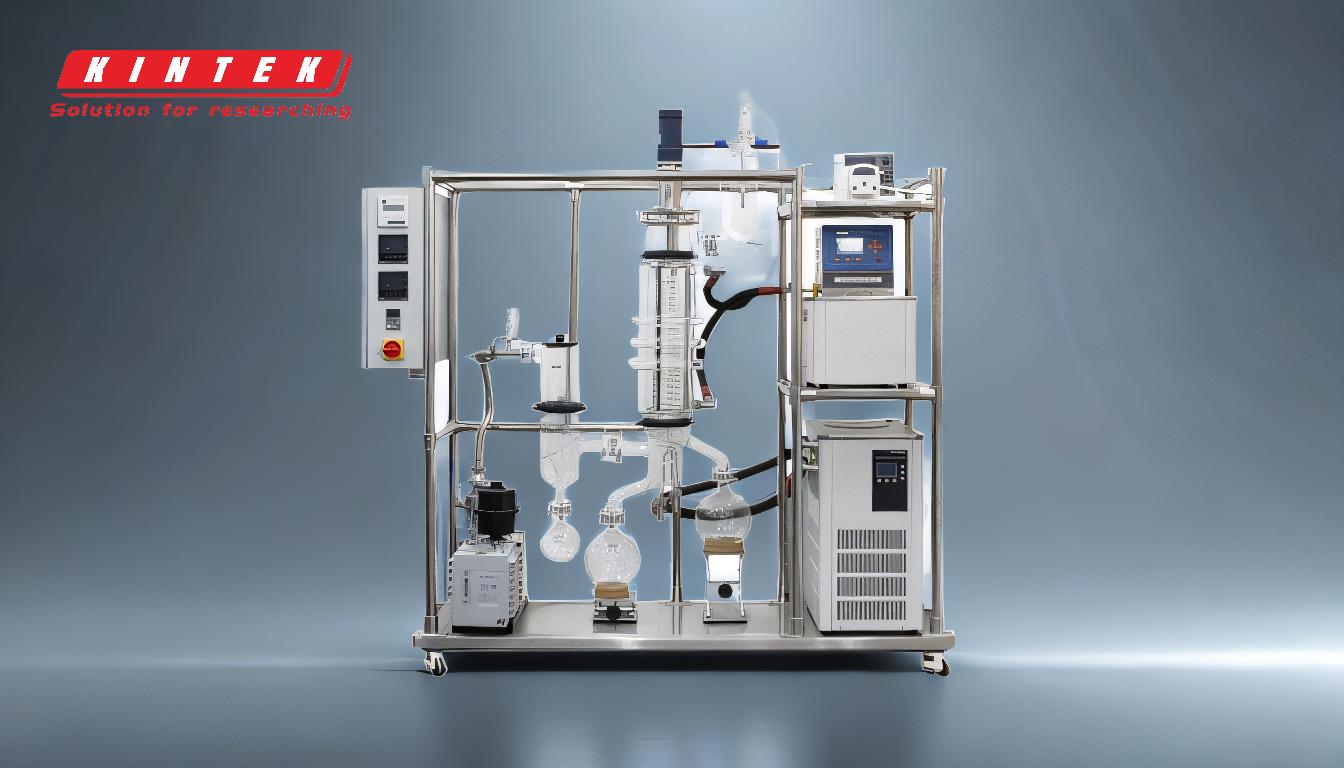Vacuum distillation lowers the boiling point of substances by reducing the pressure in the distillation system. This process leverages the principle that boiling points decrease as pressure decreases, enabling the distillation of heat-sensitive materials at much lower temperatures than would be possible at atmospheric pressure. For example, water boils at 100°C at sea-level atmospheric pressure (1000 mbar), but at 45 mbar, it can boil at a significantly lower temperature. This gentle evaporation process preserves the quality and integrity of the substances being distilled, making it ideal for applications where thermal degradation must be minimized.
Key Points Explained:

-
Principle of Vacuum Distillation:
- Vacuum distillation operates on the principle that the boiling point of a liquid decreases as the pressure in the system is reduced.
- This is based on the relationship between pressure and temperature in the phase transition of liquids to vapor.
-
Pressure and Boiling Point Relationship:
- At higher pressures, more energy (heat) is required for a liquid to overcome the atmospheric pressure and transition into a vapor.
- Conversely, at lower pressures (vacuum), less energy is needed, and the liquid can boil at a lower temperature.
- For example, water boils at 100°C at 1000 mbar (atmospheric pressure), but at 45 mbar, it boils at a much lower temperature, enabling distillation without excessive heat.
-
Applications in Heat-Sensitive Materials:
- Vacuum distillation is particularly useful for distilling heat-sensitive substances that could degrade or lose their properties at higher temperatures.
- By operating at lower temperatures, the process preserves the quality, taste, and integrity of the materials being distilled.
-
Process Mechanics:
- The system creates a vacuum by reducing the pressure, which lowers the boiling point of the liquid.
- The liquid is then heated to its new, lower boiling point, causing it to evaporate.
- The vapor is condensed back into a liquid form, resulting in a purified product.
-
Advantages of Vacuum Distillation:
- Energy Efficiency: Lower boiling points mean less energy is required for heating.
- Gentle Processing: Reduced temperatures minimize the risk of thermal degradation, making it ideal for delicate materials like essential oils, pharmaceuticals, and food products.
- Improved Separation: The process allows for better separation of compounds with similar boiling points, as the reduced pressure can create a more distinct boiling range.
-
Comparison to Atmospheric Distillation:
- Atmospheric distillation operates at standard pressure (1000 mbar), requiring higher temperatures for boiling.
- Vacuum distillation, by contrast, operates at pressures below atmospheric, enabling distillation at significantly lower temperatures.
-
Example: Water Distillation:
- At 1000 mbar, water boils at 100°C.
- At 45 mbar, water can boil at a much lower temperature, demonstrating how vacuum distillation can achieve evaporation without exposing the substance to high heat.
By understanding these key points, it becomes clear how vacuum distillation leverages reduced pressure to lower boiling points, enabling efficient and gentle separation of substances. This makes it a valuable technique in industries where preserving the quality of heat-sensitive materials is critical.
Summary Table:
| Aspect | Details |
|---|---|
| Principle | Boiling points decrease as pressure is reduced. |
| Pressure & Boiling Point | Lower pressure = lower boiling temperature (e.g., water boils at 45 mbar). |
| Applications | Ideal for heat-sensitive materials like essential oils and pharmaceuticals. |
| Advantages | Energy-efficient, gentle processing, and improved separation. |
| Comparison | Operates at lower temperatures than atmospheric distillation. |
Learn how vacuum distillation can benefit your industry—contact us today!










